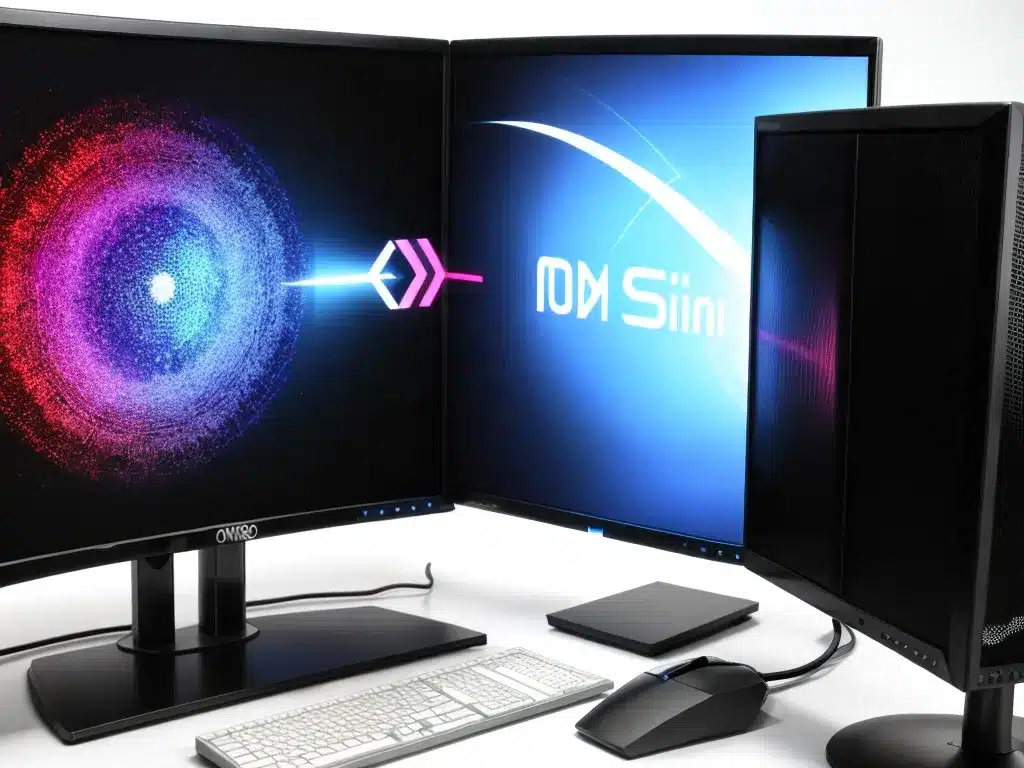
When selecting a monitor for both work and entertainment, there are several key factors to consider:
Screen Size
The screen size you need depends on your usage and desk space.
-
For office work, I recommend a 24-27 inch monitor. This provides ample screen real estate for multitasking and productivity without taking up too much space.
-
For gaming and media consumption, a 27-32 inch monitor is ideal. The larger screen allows you to see more detail and immerse yourself in the action.
-
Consider getting a larger 34-49 inch ultrawide monitor if you want maximum screen space for multitasking or immersive gaming. Just ensure you have sufficient desk space.
Resolution
Higher resolution equals sharper image quality, but also requires a more powerful computer.
-
For office work, a 1920 x 1080 (Full HD) or 2560 x 1440 (Quad HD) resolution monitor works great. Text and images will be sharp and clear.
-
For gaming and media, aim for a 2560 x 1440 or 3840 x 2160 (4K UHD) monitor. The higher pixel density provides stunning visuals. But your computer’s graphics card must be powerful enough to run games at high resolutions.
Refresh Rate
The refresh rate determines how many times per second your monitor updates with new image data.
-
For office work, a standard 60Hz refresh rate is fine.
-
For gaming and video, look for a 120Hz, 144Hz, or 240Hz monitor. The fast refresh rate makes motion look smooth with less stuttering or blurring. It really enhances gameplay.
Response Time
The response time measures how fast pixels can change color from grey-to-grey.
-
For work, 5ms or less is usually adequate.
-
For gaming, you want the lowest response time possible – 1ms being ideal. Low response times help eliminate ghosting in fast-paced games.
Panel Type
IPS panels offer the best color accuracy and wide viewing angles. This makes them a great all-round choice.
VA panels feature high contrast ratios, making them good for media viewing and gaming.
TN panels have the fastest response times but color and contrast suffer at wider angles. They are best for competitive gaming.
Adaptive Sync – G-Sync and FreeSync
G-Sync and FreeSync are adaptive sync technologies that match your monitor’s refresh rate with your GPU’s frame rate. This eliminates screen tearing and stuttering for super smooth gameplay.
-
G-Sync works with Nvidia graphics cards.
-
FreeSync works with AMD graphics cards.
If you play games, having an adaptive sync monitor matching your graphics card brand is highly recommended.
Connectivity
Check that your monitor has the right connectivity ports for your use case:
-
HDMI – Best for connecting to PCs and game consoles. Look for HDMI 2.0/2.1 for high bandwidth.
-
DisplayPort – Higher performance alternative to HDMI. Provides more bandwidth for high resolutions and refresh rates.
-
USB Ports – Convenient for connecting peripherals directly to the monitor. Look for fast USB 3.0.
Viewing Angles
IPS and VA panels offer 178°/178° viewing angles, allowing you to see the screen clearly from any angle.
TN panels have more limited 160°/170° viewing angles. You need to sit centered in front of the monitor.
So there you have it – the key factors to evaluate when choosing a monitor well-suited for both work and leisure. Prioritize screen size, resolution, refresh rate, response time, and adaptive sync technology based on your intended usage. Selecting the right monitor can greatly boost your productivity and gaming experience.












